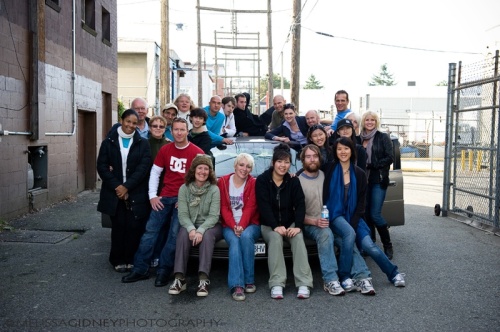Even when I’m in the middle of a screenplay I’m excited about, when I start out writing for the day, I still find myself procrastinating to the page.
I have found that by far the best way to work on a screenplay each day is to start with warm-up exercises. It makes sense, right? It’s like stretching before running.
It’s tough to just start working on the script where you left off. Warm-up exercises not only get your brain cells moving, they can inspire that next scene, help you discover something about your characters that you didn’t know before, and help you to find deeper meaning in your story.
The most exciting thing about warm-up exercises is when they surprise you. When that AHA seems to come out of thin air. It’s magical.
I was introduced to timed writing as far back as junior high school (although I admit I didn’t appreciate it as much back then). I’ve used them for years when teaching poetry. Jack Remick and Bob Ray (of Weekend Novelist fame) are timed writing fanatics. They’ve got some great tips, start lines, and exercises on their website as well.
A really simple timed writing exercise to start your day is this:
Set your timer for 5 minutes. At the top of your page, write The scene that needs to be written is . . . and see where it takes you. Don’t stop and certainly don’t edit, just write and write and write. Don’t try to make it into anything, especially not a scene. Don’t try to control it. Even if it sounds like complete nonsense, just ride it out!
EXAMPLE:
The scene that needs to be written is the one where Tibby witnesses the murder only I’m not sure if the murderer IS her father or her father gets murdered. Which is worse? To watch your father kill someone or be killed. Tibby’s dad is involved in the water controversy, whatever it is it has to be big, unethical, taking of water from the people who can’t afford it like Ben and Bruce and Danny. The densers are being ripped off but why can’t they unite and complain and who would do anything about it and how is Danny’s mother involved? I know that water matters. I know that clean water matters in this. I know there were water wars… ETC
When that 5 minutes is over, go to the MIDDLE of that piece of writing and pull out a sentence. Use THAT sentence to start your next timed writing and this time make it for 7 minutes.
Repeat this again, drawing a line from the middle of your 7 minute writing, and setting your timer for 10 minutes.
After you have completed the 10 minute one, write the next scene of your script.
You’ll be amazed what can happen when you just let yourself go like that with no commitment, no inhibition, nothing to prove. It it not only a great tool to warm up for the day, it’s a great tool when you feel mentally blocked. Just go on your gut.
If you are short on time, try it in 3, 5, and 7 minute increments.
Jack and Bob would sometimes alter the STYLE of the writing. Such as:
-write in short sentences (no complex/compound sentences)
-write in one looooong sentence (no punctuation, every thought connected by “and” or another conjunction)
-use a technique called “chaining.”
Chaining is a great way for your mind to be tricked into going in unexpected directions. Chaining means the the last word of one sentence becomes the first word in the next sentence.
EXAMPLE: Carole didn’t know what to do about her daughter. Daughter who now mocked her because she was weak. Weak for men, weak for love, never standing up for herself. Herself now an empty shell of the passionate artist she once was. Was not long ago when she could wake up feeling strong and confident. . . etc.
Hope your Script Frenzy week is going well!
Danika’s script page count: 10 out of 100 pages.



















